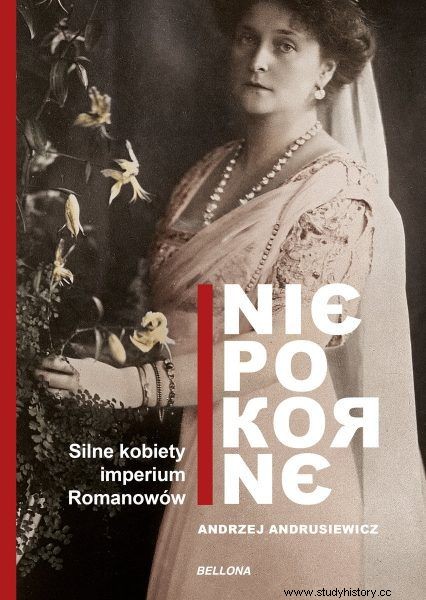In 1680, the peak of fashion at the tsarist court was ... the Polish kontusz. What was Polish was considered better and more refined. Even the common people interfered with Polish words in their conversations. How is it possible that in the 17th century, tsarist Russia began to Polonize itself? And why didn't it happen in the end?
The knowledge of Polish literature and customs at the beginning of the 1780s was good in Moscow. The example came from above:the tsar and his immediate surroundings - primarily his wife and older sister - did not hide their sympathy for the Republic of Poland.
"These three had a clear political and cultural orientation towards the West and" Latin " "- says Andrzej Andrusiewicz, historian, expert on the history of Russia and the countries of Central and Eastern Europe in his book Niepokorne. Strong Women of the Romanov Empire ”. "There was a deeper political thought behind it, and not just a whim or infatuation with the Western world."
For the love of everything Polish
Fyodor III Alekseevich was not an ideal candidate for the throne - although he was comprehensively educated and open to reforms in the state, he was also very sickly. Because of this "general weakness" he was not foretold to be long life. However, when he became tsar in 1676 after his father's death, he proved to be a surprisingly skillful - and stubborn - ruler.
When in 1679 an unknown popular girl caught his eye during religious ceremonies, he decided to take her as his wife, despite the protests of tsarist advisers. His chosen one was Agafia Gruszecka, the daughter of a Cherkassy dworian Polish descent. Her appearance at the court even more spread the fashion for everything that is Polish.

The polonization of Russia took place during the reign of Fyodor III Romanov and his wife of Polish origin, Agafia Gruszecka.
This trend was initiated by Fyodor himself, a zealous polonophile (thanks to, among others, his tutor, Simeon Połocki). It was he who ordered the language of the tsarist court to be Polish. Later, together with his wife, he set an example and encouraged his surroundings to take full advantage of the culture of the Republic of Poland. Andrzej Andrusiewicz in the book “Niepokorne. Strong women of the Romanov empire ”reports:
In all areas of life in Moscow, the unprecedented influence of Polish culture was marked. Polish books were read, Polish horses were ridden, Polish kontusz were worn . Polish words and phrases penetrated the Ruthenian language. In terms of culture and knowledge of Europe, Poles stood much higher than Russians.
Side effect of the power struggle
This state of affairs did not last long, however. The Polish influence at the Russian court was put to an end by death - first of Agafia in July 1681, and less than a year later of the tsar himself. Beloved wife of Fyodor III died as a result of postpartum complications. Their only child - heir to the throne Ilya - only survived 10 days.
The despairing young widower admittedly remarried, but the marriage with the fifteen-year-old Marfa Apraksina lasted only two months. During this time, Fyodor's health deteriorated rapidly and his illness chained him to bed.

The curiosity is based on Andrzej Andrusiewicz's book Niepokorne. Strong Women of the Romanov Empire ”, which was published by Bellona.
When he said goodbye to the world on May 7 (April 27), 1682, the government of the country - as regent on behalf of underage brothers, Ivan and Piotr - was taken over by his energetic older sister, Zofia Alekseevna Romanova. The new ruler during the tsar's lifetime was his close advisor and friend to Agafia and an ardent supporter of the political and cultural orientation towards the West, towards the Republic of Poland. Now, however, after taking the reins of the state, she was occupied with more pressing issues than adhering to Fyodor's Polonophile tendencies . In Russia, there was a ruthless struggle for power between the supporters of the "weak-minded" Ivan and the supporters of then ten-year-old Piotr, who was to go down in history as the Great.
In the atmosphere of conflicts and conspiracies, the promotion of Polish culture among Russians was relegated to the background. The more so that as early as seven years later, as a result of an unsuccessful coup, Sophie was removed from the throne and sent to a monastery, where she lived her days as Susanna. Author of the book Niepokorne. Strong women of the Romanov empire, ”notes:“ The polonization of Russia was a unique phenomenon that never happened again ”. From the point of view of the further history of Poland and Poles - undoubtedly a pity ...
Source:
Trivia is the essence of our website. Short materials devoted to interesting anecdotes, surprising details from the past, strange news from the old press. Reading that will take you no more than 3 minutes, based on single sources. This particular material is based on the book:
- Andrzej Andrusiewicz, “Rebellious. Strong women of the Romanov empire ”, Bellona 2019.
Buy the book cheaper at the Publisher's bookstore:

